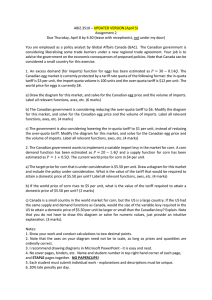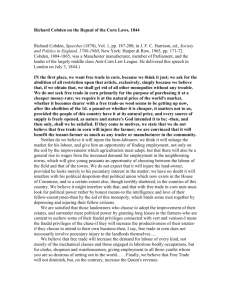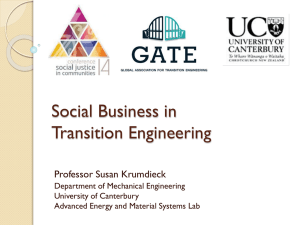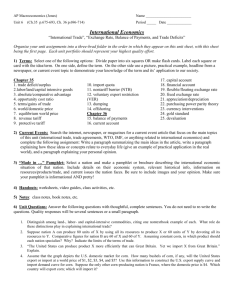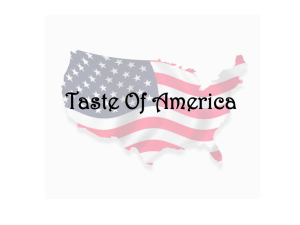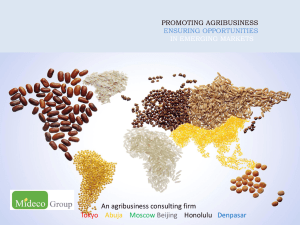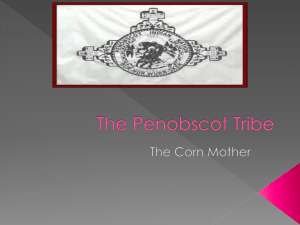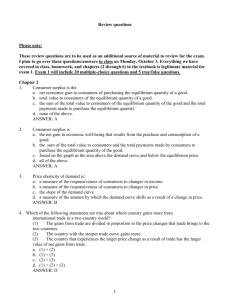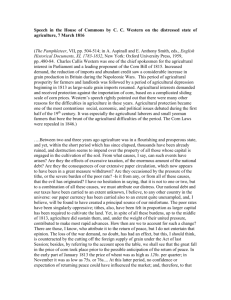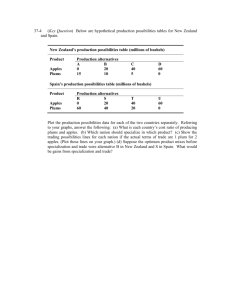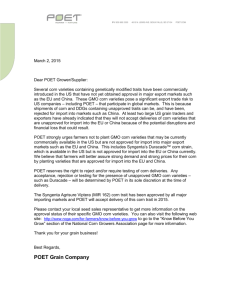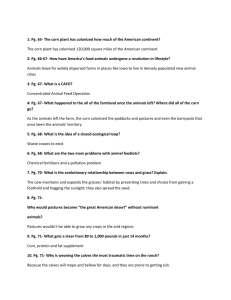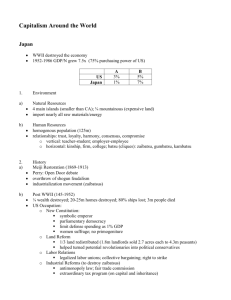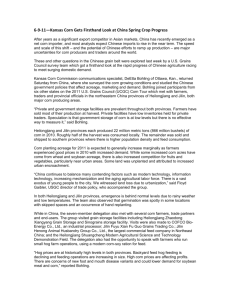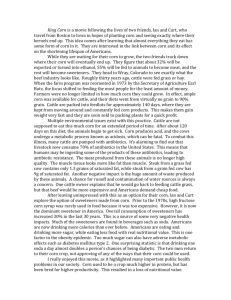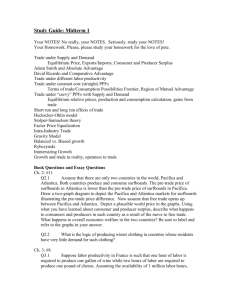EXERCISES FOR Q1 2013
advertisement
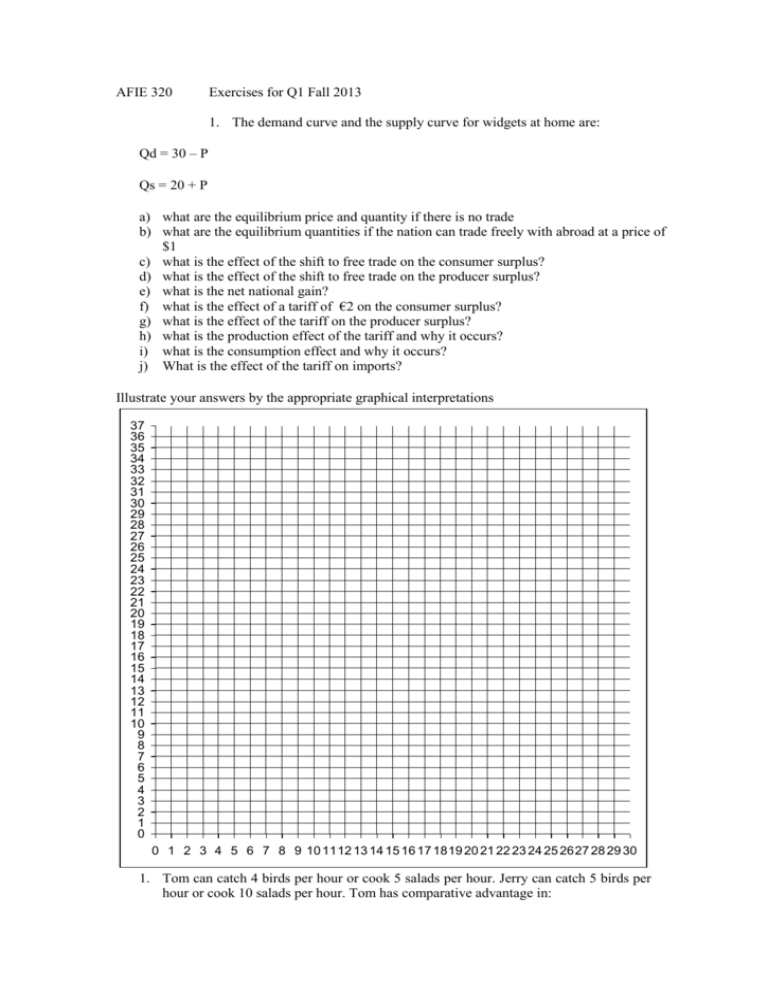
AFIE 320 Exercises for Q1 Fall 2013 1. The demand curve and the supply curve for widgets at home are: Qd = 30 – P Qs = 20 + P a) what are the equilibrium price and quantity if there is no trade b) what are the equilibrium quantities if the nation can trade freely with abroad at a price of $1 c) what is the effect of the shift to free trade on the consumer surplus? d) what is the effect of the shift to free trade on the producer surplus? e) what is the net national gain? f) what is the effect of a tariff of €2 on the consumer surplus? g) what is the effect of the tariff on the producer surplus? h) what is the production effect of the tariff and why it occurs? i) what is the consumption effect and why it occurs? j) What is the effect of the tariff on imports? Illustrate your answers by the appropriate graphical interpretations 37 36 35 34 33 32 31 30 29 28 27 26 25 24 23 22 21 20 19 18 17 16 15 14 13 12 11 10 9 8 7 6 5 4 3 2 1 0 0 1 2 3 4 5 6 7 8 9 10 1112 13 14 15 16 17 1819 20 21 22 23 24 25 2627 28 29 30 1. Tom can catch 4 birds per hour or cook 5 salads per hour. Jerry can catch 5 birds per hour or cook 10 salads per hour. Tom has comparative advantage in: a) b) c) d) 2. cooking; hunting; both cooking and hunting; neither cooking nor hunting. Based on mercantilist thinking, governments should a) subsidize and encourage imports. b) subsidize and encourage exports. c) allow for free trade unencumbered by government regulations and restrictions. d) none of the above. In the United Kingdom In the Rest of the World Labor hours to make: Labor hours to make: 1 umbrella 3.00 2.00 1 unit of corn 1.00 0.25 3. Refer to the above table. The United Kingdom has an absolute advantage in the production of _______ and the Rest of the World has an absolute advantage in the production of _______. a) neither good; corn b) neither good; both goods c) both goods; neither goods d) corn; umbrellas 4. Refer to the above table. The United Kingdom has a comparative advantage in the production of : a) umbrellas; b) corn; c) both goods; d) neither good. 5. The opportunity cost of 1 umbrella in the UK is: a) 3 units of corn b) 1 unit of corn; c) 1/3 unit of corn. 6. If Country A is labor-abundant and capital-scarce, Country B is labor-scarce and capital-abundant, Good X is produced in a labor-intensive process, and Good Y is produced in a capital-intensive process, we would expect that: a) Country A would export Good X. b) Country B would import Good Y. c) Country A would import Good X. d) Country B would import both Good X and Good Y. 7. The movement to free international trade is most likely to generate short-term unemployment in which industries? a) Industries that sell to domestic and foreign buyers b) Export-competing industries c) Industries in which there are neither imports nor exports d) None of the above 8. Which of the following does not seem to be a long-run result of free trade: a) commodity prices equalize between countries b) countries specialize more. c) one country gains while the other loses. d) factor prices equalize between countries. 9. Which of the following would be winners when trade breaks out in a land abundant country: a) Landowners b) Workers c) Capital owners




